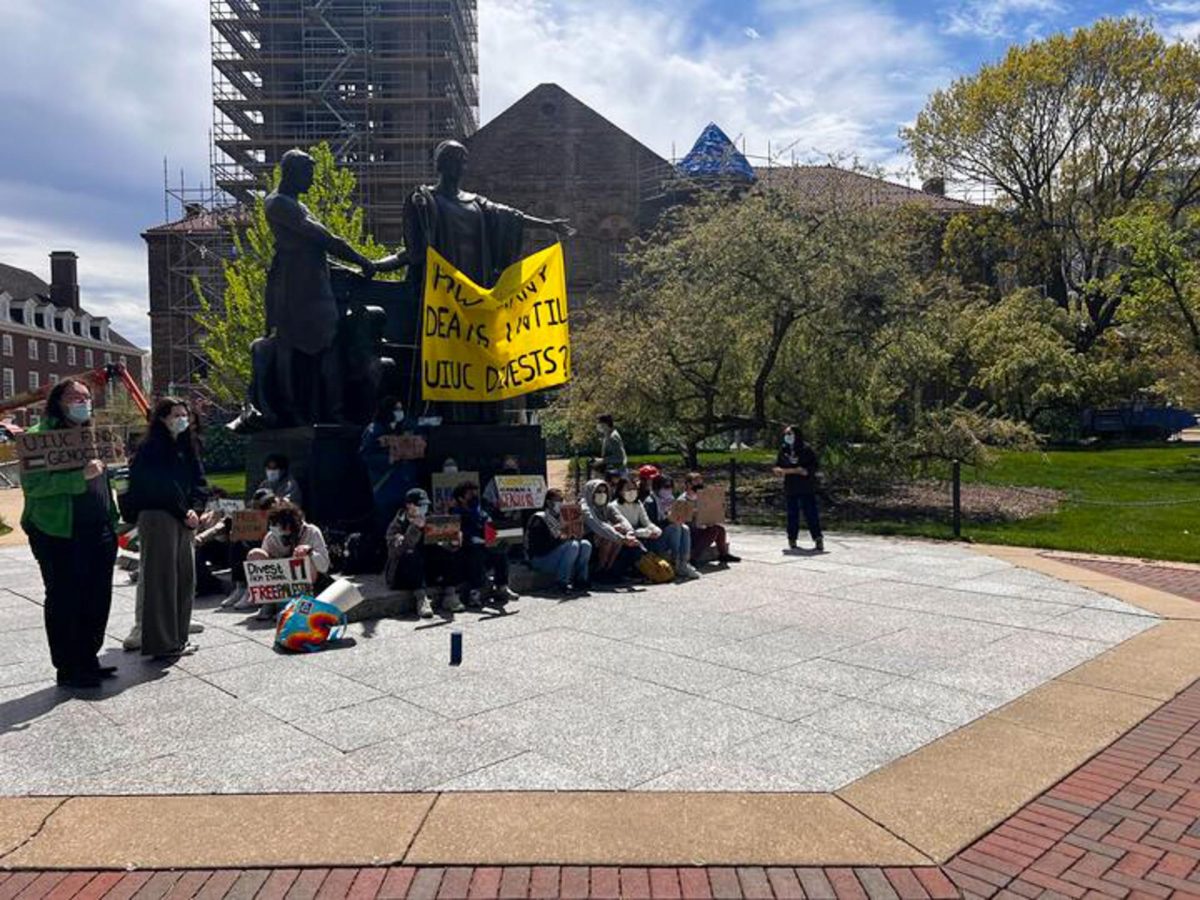After an hour and a half of non-stop dancing, Sandra Olsen was sweating and breathing hard, but she had a big, bright smile on her face.
Olsen, a senior in FAA, had just completed a session of West African Dance classes taught by Djibril Camara, a dancer and choreographer from Guinea in West Africa.
“I thought that this would be something completely different, and it turned out to be so, and I’m really happy about that,” Olsen said. “It’s a great challenge.”
The class, which is held every Sunday from 6 p.m. to 7:30 p.m. at the Channing-Murray Foundation, 1209 W. Oregon Ave. in Urbana, incorporates traditional West African dance with live West African drumming.
Seven adults and two children attended the class on Sunday. Jamie McGowan, associate director of the Center for African Studies said this was a smaller crowd because of the holiday weekend. She said normally anywhere from 12 to 20 people attend the class each week.
Get The Daily Illini in your inbox!
“The interest in dance has grown since [Camara] has been here,” McGowan said.
She said Camara began teaching classes in the Fall of 2007, and she hopes he will stay as long as there is an interest in the class and traditional West African dance.
The dancing, Camara said, is characterized by open, energetic movements of the entire body. He said another key to traditional West African dance is a loose, relaxed head and neck.
To accompany the dancers, volunteers provide the music for the class in the form of West African drumming.
Several volunteers play the djembe, a drum with an hourglass-shaped base that is played with bare hands and provides the main rhythms.
Another volunteer plays the dunduns, a set of three drums that are played with drum sticks and provide accompaniment to the main rhythm of the djembes.
One drummer, Gordon Kay, said many drummers that volunteer for the class learned from Bolokada Conde, a visiting professor who teaches a West African drumming class at the University as well as a weekend class for the Champaign-Urbana community.
At this session, Kay played the djembe, leading two other djembe players and one dundun player.
Kay said that while the rhythms may sound spontaneous and made-up, they are actually a pattern that the players have to learn.
“Everything we play is a set rhythm, a traditional rhythm,” Kay said.
He said there are hundreds of traditional West African rhythms, and while for some classes they play whatever they feel like, Camara had requested a particular rhythm for this evening’s class.
The class began with a ten-minute warm up, running around the room, and performing various stretches and aerobic warm-ups all at an upbeat pace to follow along with the drum beats.
Then, the drummers took a break while Camara taught the class various dance moves without the music. When the class was ready, Camara called the drummers back to their places so the moves could be put to music.
For both the drummers and the dancers, the presence of the other is essential to the experience.
Cody Jensen, a senior in FAA who enrolled in Conde’s class, said he volunteers to drum not just for the practice, but to experience the natural accompaniment of the music to the dance.
“This is a little bit closer to the context we would perform in, so it’s nice to have that interaction,” Jensen said.
Daniel Parsons of Urbana said there is a definite advantage to having the live music as opposed to a recording.
“It gives you energy,” Parsons said. “ The music feeds off the dancers and vice versa.”
Camara stands at the front of the room with the students lined up in rows at the back of the room. He shows them a move to the rhythm of the music, then the students perform the movements, moving toward the front of the room in rows as they do them, then returning to the back of the room to perform again.
As a professional dancer, Camara was the principal choreographer for the Ballet du Afrique Noir, touring throughout Africa, Europe and the U.S. For the past six years, he has toured the U.S., teaching traditional West African dance.
Olsen said Camara’s experience in dance and his eye for detail makes him an excellent teacher.
“He can tell you why your dance looks bad, and then he’ll help you fix it,” Olsen said.
The class closes with everyone in a circle, taking turns performing individually in the center, ending with Camara.
Nicole Tami, the associate director of International Programs and Studies, said this solo performance does not intimidate her. She said one of the reasons she and her daughter, Lumina, attend the classes is because of the relaxed, inclusive environment.
“It demonstrates the range of cultural talent and experience that you can have here at the University,” Tami said. “Right in a little Midwestern town, you can still come to do some West African dancing and drumming.”









